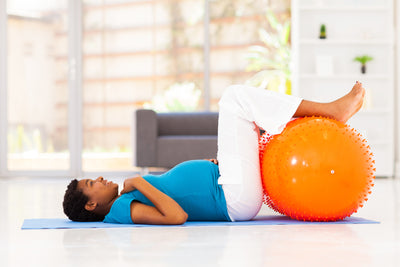In recent years, more and more people have been embracing the concept of cross-training to optimize their workouts and boost their overall fitness levels. Cross-training, which involves participating in multiple exercise modalities, has been shown to offer numerous benefits, such as increased strength, flexibility, and endurance. So here, we'll explore the benefits of combining traditional strength training with disciplines like Pilates, barre, and yoga in your cross-training routine. Learn more about the benefits of cross-training and get ready to unlock your full fitness potential
-
Improved Strength and Power:
Traditional strength training involves lifting weights or using bodyweight exercises to target specific muscle groups, which can help improve overall muscular strength and power (1). Combining this modality with others like Pilates, barre, and yoga can create a well-rounded fitness program that targets all major muscle groups.
-
Enhanced Flexibility and Range of Motion:
Disciplines such as Pilates, barre, and yoga are known for their emphasis on flexibility and range of motion (2). These exercises often involve dynamic stretching, which can help lengthen muscles and improve joint mobility. Coupled with strength training, these modalities can help maintain a healthy balance between strength and flexibility (3).
-
Reduced Risk of Injury:
Cross-training can help reduce the risk of injury by ensuring a balanced workout regimen that targets different muscle groups (4). By incorporating a variety of exercise styles into your routine, you can prevent muscular imbalances and overuse injuries that can result from focusing on just one type of exercise.
-
Improved Balance and Coordination:
Practicing activities like Pilates, barre, and yoga can improve balance and coordination through the emphasis on core strength and body awareness (5). Adding these modalities to your strength training regimen can help enhance overall stability and body control during daily activities or other sports.
-
Increased Endurance:
Incorporating various exercise modalities can increase your overall endurance, allowing you to work out for longer periods without fatigue (6). This can be particularly beneficial if you're training for a specific event or simply want to improve your cardiovascular health.
-
Mental Health Benefits:
Cross-training with diverse disciplines can offer mental health benefits, such as reduced stress and increased focus (7). These exercises can help release endorphins, the body's natural "feel-good" hormones, and promote a sense of well-being.
-
Avoiding Exercise Boredom:
Switching up your exercise routine with different modalities can help stave off boredom and keep you engaged in your workouts. This can lead to increased motivation and a higher likelihood of sticking to your fitness goals (8).
Cross-training with a mix of traditional strength training, Pilates, barre, and yoga can offer a host of physical and mental benefits, making it an excellent choice for those seeking a well-rounded fitness regimen. By incorporating these exercise modalities into your routine, you can unlock your full potential and achieve a balanced, healthier, and happier lifestyle.
Sources:
-
Westcott, W. (2012). Resistance training is medicine: effects of strength training on health. Current Sports Medicine Reports, 11(4), 209-216.
-
Segal, N. A., et al. (2013). Flexibility and lifetime risk of lower extremity injuries. Journal of Orthopaedic & Sports Physical Therapy, 43(10), 706-713.
-
Page, P. (2012). Current concepts in muscle stretching for exercise and rehabilitation. International Journal of Sports Physical Therapy, 7(1), 109-119.
-
Mikkelsen, K., et al. (2017). The effects of vitamin D supplementation on muscle function among active college-aged individuals. Sports Medicine, 47(3), 437-448.
-
Kattenstroth, J. C., et al. (2013). Superior sensory, motor, and cognitive performance in elderly individuals with multi-year dancing activities. Frontiers in Aging Neuroscience, 5, 74.
-
Tomaszewski, P., et al. (2011). The effects of training modalities on arterial stiffness and wave reflection in healthy young adults. American Journal of Hypertension, 24(9), 1020-1023.
-
Penedo, F. J., & Dahn, J. R. (2005). Exercise and well-being: a review of mental and physical health benefits associated with physical activity. Current Opinion in Psychiatry, 18(2), 189-193.
- Stults-Kolehmainen, M. A., & Sinha, R. (2014). The effects of stress on physical activity and exercise. Sports Medicine, 44(1), 81-121.






Leave a comment